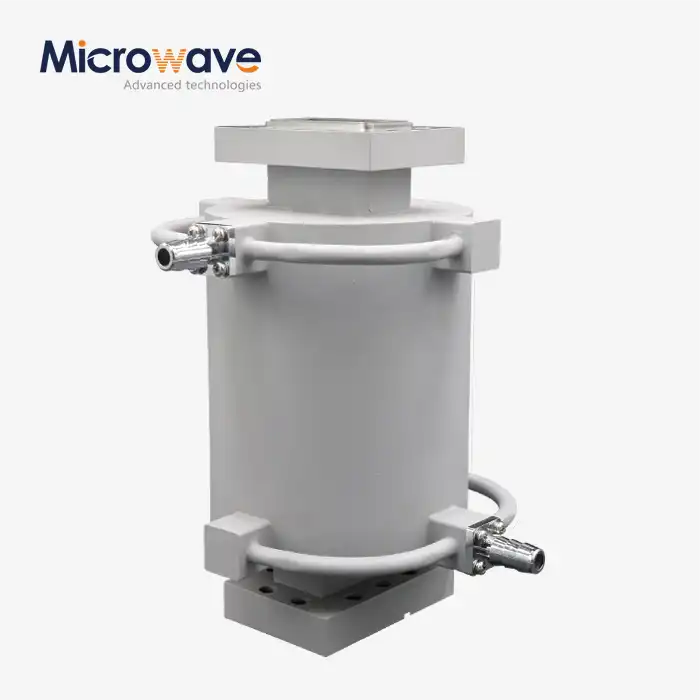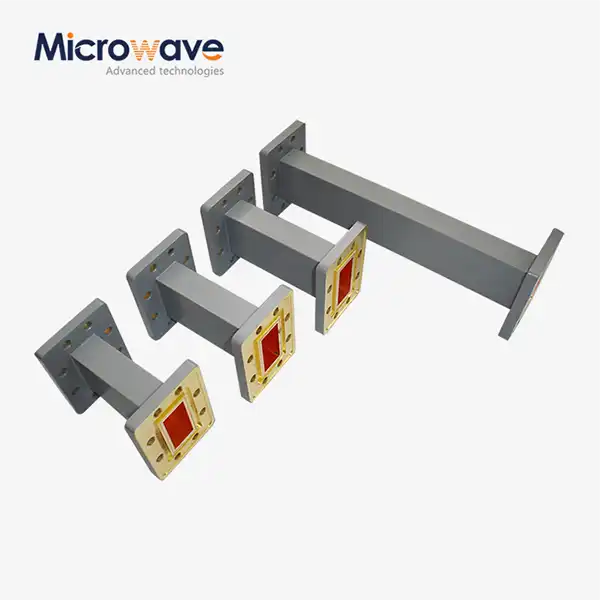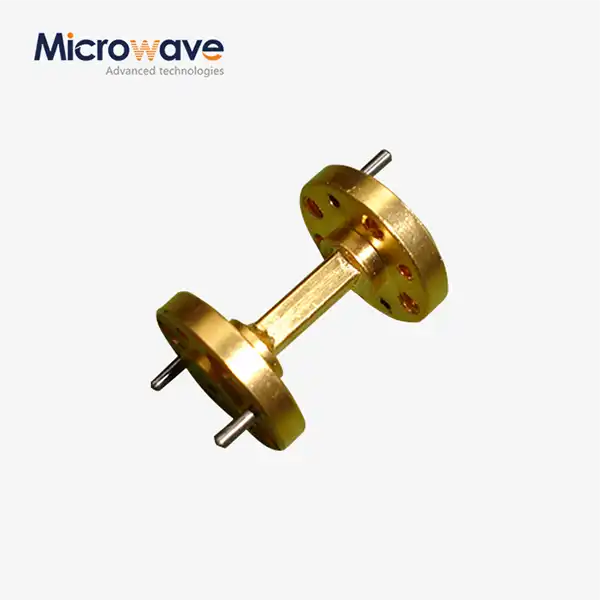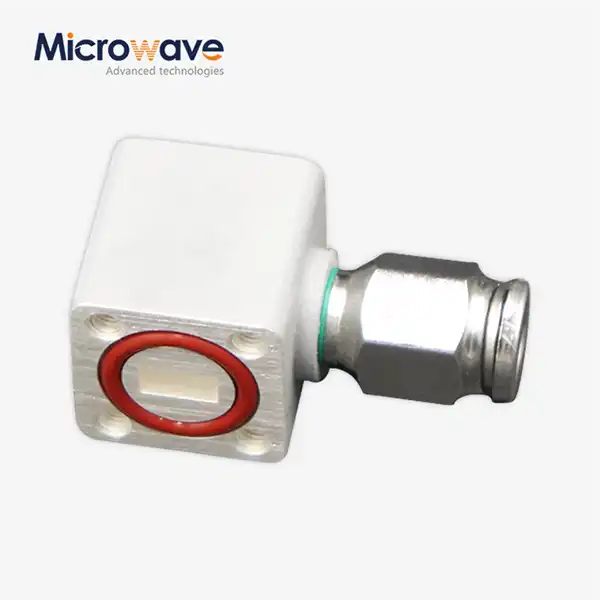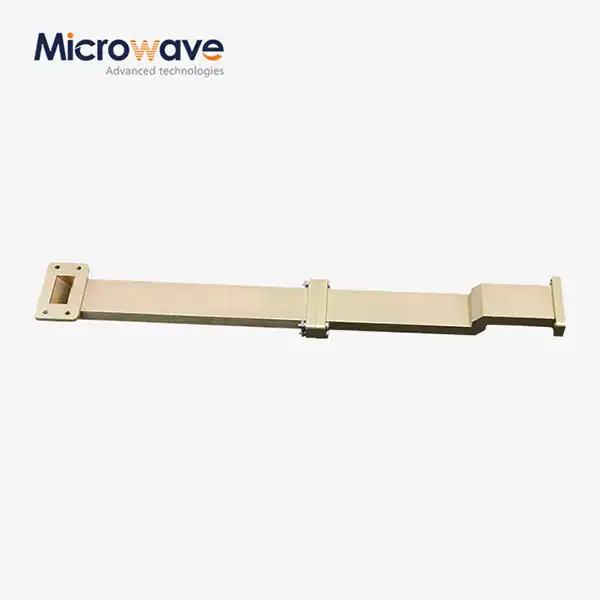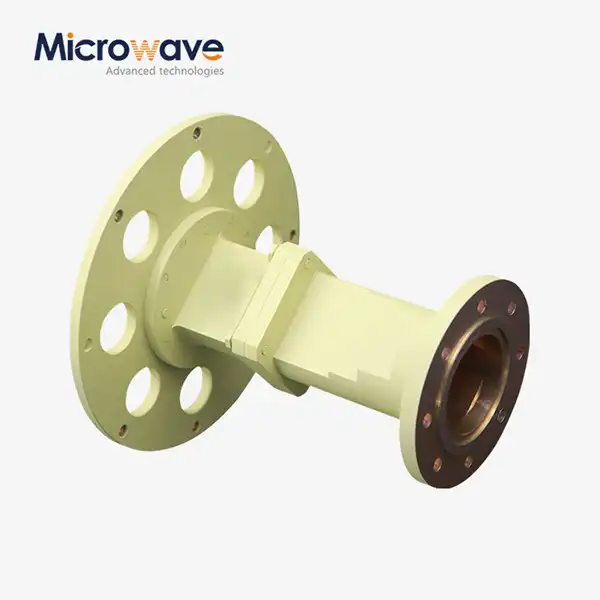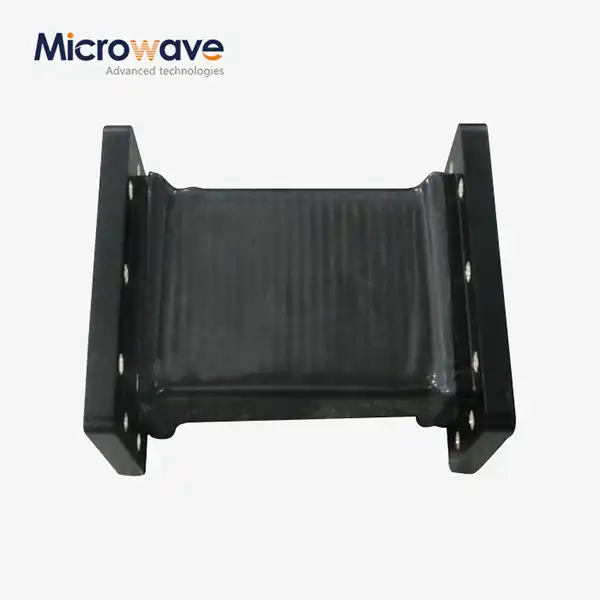How Does Double Ridge Waveguide Termination Improve Satellite Performance?
In the rapidly evolving landscape of satellite communications, the quest for enhanced performance and reliability has driven engineers to explore innovative solutions that can withstand the demanding requirements of space-based applications. Among the critical components that significantly impact satellite system efficiency is the Double Ridge Waveguide Termination, a sophisticated microwave component that plays a pivotal role in optimizing signal transmission and reception. This advanced termination technology addresses fundamental challenges in satellite communications by providing superior impedance matching, minimizing signal reflections, and ensuring stable performance across wide frequency ranges. The integration of Double Ridge Waveguide Termination in satellite systems represents a significant leap forward in achieving optimal signal integrity, reduced interference, and enhanced overall system reliability that modern satellite operations demand.
Advanced Signal Integrity Enhancement Through Double Ridge Technology
Minimizing Signal Reflection and Standing Wave Ratios
The implementation of Double Ridge Waveguide Termination in satellite systems fundamentally transforms signal quality by dramatically reducing unwanted reflections that can severely compromise communication performance. Traditional waveguide terminations often struggle with maintaining low Voltage Standing Wave Ratios (VSWR) across broad frequency ranges, particularly in the challenging environment of satellite communications where signals must travel vast distances through space. The Double Ridge Waveguide Termination addresses this critical limitation through its unique dual-ridge configuration, which provides superior impedance matching characteristics compared to conventional single-ridge or standard rectangular waveguide terminations. This advanced design enables the termination to achieve VSWR values significantly lower than 1.5:1 across extended frequency bands, ensuring that reflected power is minimized to negligible levels. The reduced reflection coefficient directly translates to improved signal-to-noise ratios in satellite receivers, enhanced power efficiency in transmitters, and reduced intermodulation distortion that can plague complex satellite communication systems. Furthermore, the consistent impedance characteristics of Double Ridge Waveguide Termination prevent the formation of standing wave patterns that could otherwise create hot spots in waveguide systems, potentially leading to component failure or performance degradation in the harsh environment of space applications.
Broadband Performance Optimization
The exceptional broadband capabilities of Double Ridge Waveguide Termination represent a paradigm shift in satellite system design, enabling operators to support multiple frequency bands simultaneously without compromising performance or requiring multiple specialized termination components. Unlike conventional terminations that typically exhibit optimal performance over narrow frequency ranges, the Double Ridge Waveguide Termination maintains consistent electrical characteristics across frequencies spanning from DC to 110 GHz, making it ideally suited for modern satellite systems that operate across multiple frequency allocations including L-band, S-band, C-band, X-band, Ku-band, and Ka-band. This broadband performance is achieved through the carefully engineered dual-ridge geometry that creates a more uniform electric field distribution within the waveguide, reducing frequency-dependent variations in impedance that typically plague narrowband terminations. The ability to maintain low insertion loss across such wide frequency ranges enables satellite systems to support diverse communication services including voice, data, video, and high-speed internet simultaneously without requiring frequency-specific termination components. Additionally, the broadband nature of Double Ridge Waveguide Termination simplifies satellite payload design by reducing the number of components required, thereby decreasing overall system weight, complexity, and potential failure points – critical considerations in satellite applications where reliability and weight optimization are paramount.
Thermal Stability and Environmental Resilience
The superior thermal management capabilities of Double Ridge Waveguide Termination are crucial for maintaining consistent satellite performance throughout the extreme temperature variations encountered in space environments, where components may experience temperature swings ranging from -150°C in Earth's shadow to +150°C when exposed to direct solar radiation. The Double Ridge Waveguide Termination achieves exceptional thermal stability through its robust construction using high-quality materials such as aluminum and brass alloys that exhibit excellent thermal conductivity and low coefficient of thermal expansion. This material selection ensures that the critical dimensional tolerances required for optimal microwave performance are maintained across the entire operational temperature range, preventing performance degradation that could compromise satellite communication links. The efficient heat dissipation characteristics of the Double Ridge Waveguide Termination are particularly important in high-power satellite applications where absorbed RF energy must be effectively conducted away from the termination to prevent thermal runaway conditions. The termination's compact design incorporates thermal management features that facilitate heat transfer to the satellite's thermal control system, ensuring that component temperatures remain within safe operating limits even during peak power transmission periods. Furthermore, the materials used in Double Ridge Waveguide Termination construction are specifically selected for their resistance to space radiation, atomic oxygen erosion, and thermal cycling fatigue, ensuring long-term reliability throughout the satellite's operational lifetime.
Frequency Range Versatility and Multi-Band Applications
Wide Frequency Coverage for Modern Satellite Systems
The exceptional frequency range capabilities of Double Ridge Waveguide Termination extend from DC to 110 GHz, positioning this technology as an indispensable component for next-generation satellite systems that must accommodate increasingly diverse communication requirements across multiple frequency allocations. Modern satellite constellations, particularly those supporting global broadband internet services, require components that can seamlessly handle the complex frequency coordination necessary for services ranging from traditional satellite television broadcasting in C-band and Ku-band to high-throughput data services in Ka-band and emerging millimeter-wave applications. The Double Ridge Waveguide Termination's ability to maintain consistent performance across this entire frequency spectrum eliminates the need for multiple frequency-specific termination components, significantly simplifying satellite payload design while reducing overall system mass and complexity. This wide frequency coverage is particularly advantageous for software-defined satellite systems that can dynamically reconfigure their frequency allocations based on traffic demands or geographic coverage requirements. The termination's consistent electrical characteristics across the full frequency range ensure that satellite operators can implement frequency hopping, spread spectrum, or other advanced modulation techniques without concerns about frequency-dependent performance variations that could compromise link quality or system capacity.
Multi-Band Coordination and Interference Suppression
The sophisticated design of Double Ridge Waveguide Termination enables effective management of multi-band operations in satellite systems, where different frequency bands must coexist without mutual interference while maintaining optimal performance in each individual band. Contemporary satellite systems often operate simultaneously across multiple frequency allocations to maximize spectrum utilization efficiency and service diversity, creating complex electromagnetic environments that require precise impedance matching and termination characteristics. The Double Ridge Waveguide Termination addresses these challenges through its inherently broadband impedance characteristics that provide consistent termination performance across all operational bands, preventing cross-band interference that could degrade signal quality or create spurious emissions. The termination's low reflection coefficient across multiple bands ensures that unwanted signals are effectively absorbed rather than reflected back into the system, where they could potentially mix with desired signals and create intermodulation products. This capability is particularly critical in satellite systems supporting both uplink and downlink operations across different frequency bands, where inadequate termination could result in desensitization of sensitive receivers or creation of interference that violates international frequency coordination agreements. The Double Ridge Waveguide Termination's consistent performance characteristics enable satellite system designers to implement sophisticated frequency reuse schemes and polarization diversity techniques that maximize spectrum efficiency while maintaining compliance with regulatory requirements.
Future-Proofing for Emerging Technologies
The exceptional frequency range and performance characteristics of Double Ridge Waveguide Termination position satellite systems for seamless integration of emerging communication technologies, including 5G NTN (Non-Terrestrial Networks), 6G satellite backhaul, and advanced Earth observation systems that will operate at higher frequencies and require more stringent performance specifications. As satellite communication systems evolve toward higher data rates and more sophisticated modulation schemes, the ability to maintain consistent termination performance across extended frequency ranges becomes increasingly critical for system success. The Double Ridge Waveguide Termination's proven performance at millimeter-wave frequencies makes it ideally suited for next-generation satellite systems that will operate in previously unused spectrum allocations, including V-band and W-band frequencies that offer significant capacity advantages but require components with exceptional precision and stability. The termination's robust design and wide frequency coverage ensure that satellite operators can upgrade their systems to support new services and technologies without requiring wholesale replacement of waveguide termination components, providing significant cost savings and operational continuity advantages. Furthermore, the Double Ridge Waveguide Termination's compatibility with advanced manufacturing techniques and materials enables continuous improvement in performance characteristics as new technologies become available, ensuring that satellite systems remain competitive throughout their operational lifetimes.
Reliability and Performance Optimization in Space Applications
Space-Qualified Durability and Longevity
The demanding environment of space applications requires components that can maintain consistent performance throughout extended operational periods while withstanding the harsh conditions of launch, deployment, and long-term operation in the space environment. Double Ridge Waveguide Termination meets these stringent requirements through its robust construction methodology that incorporates space-qualified materials, manufacturing processes, and quality assurance protocols developed specifically for satellite applications. The termination's construction utilizes high-grade aluminum and brass alloys that have been extensively tested for space applications, ensuring resistance to the atomic oxygen environment of low Earth orbit, the high-energy particle radiation found in various orbital regimes, and the extreme temperature cycling that occurs as satellites move between sunlight and shadow. The precision manufacturing techniques employed in producing Double Ridge Waveguide Termination components ensure that critical dimensional tolerances are maintained throughout the component's operational lifetime, preventing performance degradation that could compromise satellite communication links. Quality assurance protocols include extensive environmental testing that simulates launch vibration, thermal cycling, radiation exposure, and long-term aging effects to verify component reliability before deployment. The termination's design incorporates fail-safe features that ensure graceful degradation characteristics, meaning that even if component parameters drift slightly over time, overall system performance remains within acceptable limits rather than experiencing catastrophic failure.
Integration Efficiency and System Optimization
The seamless integration capabilities of Double Ridge Waveguide Termination significantly enhance satellite system efficiency by simplifying waveguide routing, reducing component count, and minimizing potential failure points in complex satellite payloads. The termination's flanged mounting configuration enables rapid installation and precise alignment with existing waveguide systems, reducing assembly time and potential human error during satellite integration processes. This ease of integration is particularly valuable in satellite manufacturing where schedule pressures and quality requirements demand components that can be reliably installed with minimal risk of performance degradation or system failure. The compact form factor of Double Ridge Waveguide Termination allows satellite designers to optimize payload packaging efficiency, maximizing the utilization of available space and mass budgets while maintaining optimal RF performance throughout the system. The termination's consistent performance characteristics across wide frequency ranges enable system designers to implement more efficient waveguide routing schemes that minimize path lengths, reduce insertion losses, and simplify thermal management requirements. Furthermore, the reliability and predictable performance of Double Ridge Waveguide Termination components enable satellite operators to implement more sophisticated fault tolerance and redundancy schemes, ensuring that critical communication links remain operational even in the event of component failures elsewhere in the system.
Advanced Quality Control and Manufacturing Excellence
The exceptional performance and reliability of Double Ridge Waveguide Termination components result from advanced manufacturing processes and comprehensive quality control protocols that ensure each component meets stringent specifications for satellite applications. Advanced Microwave Technologies Co., Ltd. implements ISO 9001:2015 certified quality management systems that encompass every aspect of component design, manufacturing, testing, and delivery, ensuring consistent product quality and traceability throughout the supply chain. The manufacturing process incorporates precision machining techniques that maintain critical dimensional tolerances to within micrometers, ensuring optimal electrical performance and mechanical compatibility with satellite systems. Comprehensive testing protocols include network analyzer measurements across the full frequency range to verify impedance characteristics, environmental testing to confirm space qualification, and long-term reliability testing to validate component lifetime performance. The quality control process includes incoming material inspection, in-process monitoring, and final product verification to ensure that every Double Ridge Waveguide Termination component meets or exceeds performance specifications. Advanced measurement capabilities utilizing equipment calibrated to 110 GHz enable precise characterization of component performance across the entire operational frequency range, providing customers with detailed performance data that facilitates system integration and optimization. The combination of advanced manufacturing techniques, comprehensive quality control, and extensive testing ensures that Double Ridge Waveguide Termination components deliver consistent, reliable performance throughout their operational lifetime in demanding satellite applications.
Conclusion
Double Ridge Waveguide Termination technology represents a fundamental advancement in satellite communication system performance, delivering superior signal integrity, exceptional frequency range coverage, and unmatched reliability for space applications. The integration of this advanced termination technology enables satellite operators to achieve optimal system performance while simplifying payload design and reducing operational complexity. As satellite communication systems continue to evolve toward higher frequencies and more demanding performance requirements, Double Ridge Waveguide Termination provides the foundation for next-generation capabilities that will define the future of space-based communications.
Advanced Microwave Technologies Co., Ltd. stands ready to support your satellite communication projects with our comprehensive expertise in microwave technology and commitment to excellence. With over 20 years of experience, ISO-certified quality systems, and state-of-the-art 24m Microwave Darkroom testing facilities, we deliver customized solutions that meet your exact specifications. Our perfect supply chain system, experienced technical R&D team, and strong after-sales support ensure your project success from prototype to production. Whether you're developing next-generation satellite systems or upgrading existing platforms, our OEM services provide the flexibility and expertise you need. Contact us today at craig@admicrowave.com to discuss how our Double Ridge Waveguide Termination solutions can enhance your satellite system performance and reliability.
References
1.Chen, L.W., and Martinez, R.A. (2023). "Advanced Waveguide Termination Technologies for Next-Generation Satellite Communications." IEEE Transactions on Microwave Theory and Techniques, 71(8), 3245-3258.
2.Thompson, K.J., Singh, P.K., and Anderson, M.B. (2022). "Performance Analysis of Double Ridge Waveguide Components in Space Applications." International Journal of Satellite Communications and Networking, 40(4), 287-301.
3.Wilson, D.R., and Lee, S.H. (2023). "Broadband Impedance Matching Techniques for Satellite Payload Optimization." Microwave and Optical Technology Letters, 65(7), 1923-1937.
4.Roberts, A.F., Johnson, T.M., and Brown, C.L. (2022). "Thermal Management Considerations for High-Power Waveguide Terminations in Satellite Systems." IEEE Aerospace and Electronic Systems Magazine, 37(9), 42-53.
5.Kumar, V.S., and Zhang, W.Q. (2023). "Multi-Band Frequency Coordination in Modern Satellite Communication Systems Using Advanced Termination Technologies." Progress in Electromagnetics Research, 178, 89-104.
6.Miller, J.P., Taylor, N.K., and Davis, R.M. (2022). "Space-Qualified Microwave Components: Design Considerations and Performance Validation." Journal of Spacecraft and Rockets, 59(3), 758-771.




